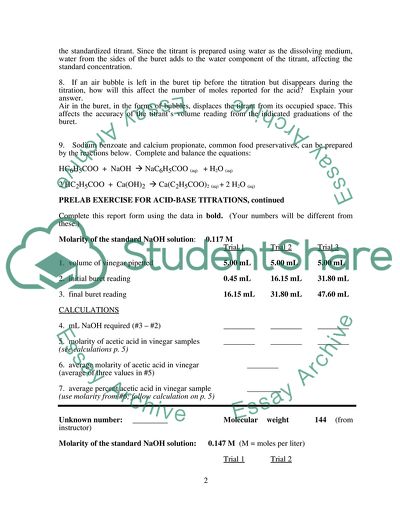Cite this document
(Acid-Base Titrations Lab Report Example | Topics and Well Written Essays - 1750 words, n.d.)
Acid-Base Titrations Lab Report Example | Topics and Well Written Essays - 1750 words. https://studentshare.org/chemistry/1733730-prelab-acid-basetitrations
Acid-Base Titrations Lab Report Example | Topics and Well Written Essays - 1750 words. https://studentshare.org/chemistry/1733730-prelab-acid-basetitrations
(Acid-Base Titrations Lab Report Example | Topics and Well Written Essays - 1750 Words)
Acid-Base Titrations Lab Report Example | Topics and Well Written Essays - 1750 Words. https://studentshare.org/chemistry/1733730-prelab-acid-basetitrations.
Acid-Base Titrations Lab Report Example | Topics and Well Written Essays - 1750 Words. https://studentshare.org/chemistry/1733730-prelab-acid-basetitrations.
“Acid-Base Titrations Lab Report Example | Topics and Well Written Essays - 1750 Words”. https://studentshare.org/chemistry/1733730-prelab-acid-basetitrations.


